A unique title released by the Bhau Daji Lad Museum to mark its 150 years interprets the city’s history and evolution through 101 objects in its collection
One of the objects featured in Mumbai – A City Through Objects edited by Tasneem Zakaria Mehta is Narasimha; half-baked terracotta and pigments, 1910, made at the erstwhile V&A Museum, Bombay; 26 x 19 x 16 cm. Narasimha is one of Vishnu’s 10 avatars, depicted here as ripping apart demon king Hiranyakashipu in a symbol of deterrence against wrongdoing. The clay model was based on an 1899 painting by Mumbai painter Raja Ravi Varma. Pic Courtesy/Mumbai A City Through Objects
The dervish’s begging bowl in the collection of Mumbai’s Dr Bhau Daji Lad Museum bears inscriptions from the Quran in Nastaliq script and mystical poetry in Persian, and is made from one-half of the shell of the Coco de Mer or “coconut of the sea”, a species of palm found in the Seychelles.
The entry on the object in Mumbai: A City Through Objects (Harper Design) launching tomorrow and edited by Tasneem Zakaria Mehta, Managing Trustee and Honorary Director of the museum, informs how these bowls were associated with wandering Sufi preachers in India active between the 12th and 14th centuries. Moreover, Bombay played an important part in spreading Sufi teachings, with Worli’s Haji Ali Dargah of Sufi saint Haji Ali Bukhari being one of the city’s most visited Sufi sites. “Very few people know that Mumbai was a Sufi centre,” says Zakaria Mehta, “It is not just that an object is beautiful⦠What were their makers going through, what were their stories and how did they [in turn] impact the objects,” she insists, are what engage the ordinary reader.
Tasneem Zakaria Mehta is editor of Mumbai: A City Through Objects
Inspired by former director of the British Museum Neil MacGregor’s A History of the World in 100 Objects, and choosing the number 101 for its auspiciousness in India, the book had its genesis in Zakaria Mehta’s PhD thesis for which she was researching museums in the 19th century. Associations with bodies like INTACH, she says, also allowed her to study institutions like the Indian Museum closely. It was however, the focus accorded by the pandemic that allowed her to work squarely on the book, guiding it editorially with contributions from other curators. “The idea was to tell stories.”
An entry on a Zoroastrian woman’s bridal salwar then needed the writers to talk about other aspects of Parsi contributions in Mumbai, the most iconic among them being the Irani cafes. “We recontextualised the information we already had within the setting of Mumbai. It took the story beyond just the object.”
Zakaria Mehta cites Nobel laureate Orhan Pamuk’s Museum of Innocence, based on his 2008 novel and featuring everyday objects from it, where one of the first things the viewer finds is the “cigarette wall”, the butts reminiscent of the cigarettes one of its characters smokes. “The object,” recalls Zakaria Mehta, “represents the thoughts and a whole lifetime of anxiety of this person,” reflecting on the idea of an object going behind a glass case and getting museumised, and explaining how the new book also deconstructs the remoteness of these objects behind the museum case.
The book’s eight sections on subjects like natural history, the industrial arts, people of India and Raja Ravi Varma reflect the museum’s evolution through its 150 years, the book releasing on the day it was thrown open to the public a century-and-a-half ago. Exhibitions, talks and workshops have been planned, aimed at building audience interactions.
DRAINAGE MAP OF BOMBAY
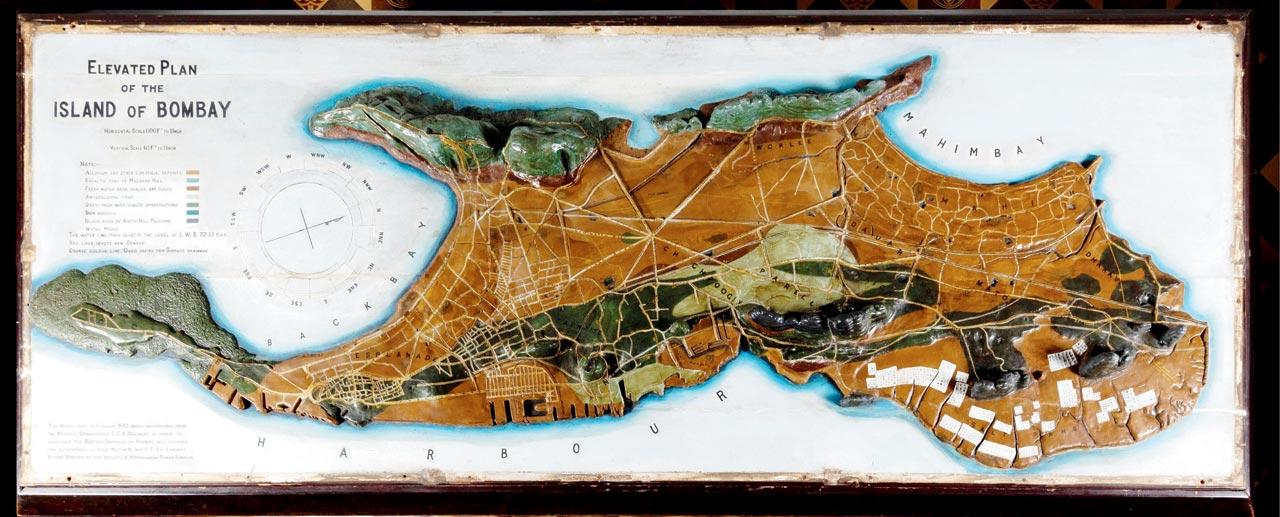
During the mid-19th century, the idea of modernity was entwined with notions of hygiene and sanitation, based on new technologies like the hydraulic water supply and underground drainage, which required intensive use of new machinery and heavy expenditure. The rapid population growth in Bombay had significantly increased the pressure on the existing infrastructure. One of the important people to leave an impact on sanitary policy in both Britain and India was Florence Nightingale who was consulted by officials coming out to India on matters pertaining to sanitation. She had a major impact on improving the sanitation and water systems in Bombay as well as in Madras and Calcutta in the late 19th century. Several schemes were conceived, but it was only in 1882, under the guidance of Municipal Commissioner ECK Ollivant and executive engineer Rienzi Walton, that a proper drainage system for the city was executed. The 1882 relief map in the Museum collection, along with the drainage and sewage systems, also shows the geological features of Bombay. It shows the alluvium and other superficial deposits, the basaltic trap of Malabar Hill, freshwater beds, shales and flags, and a grey trap with shales interstratified, and the black rock of the Antop Hill.
YERAWADA JAIL CARPET
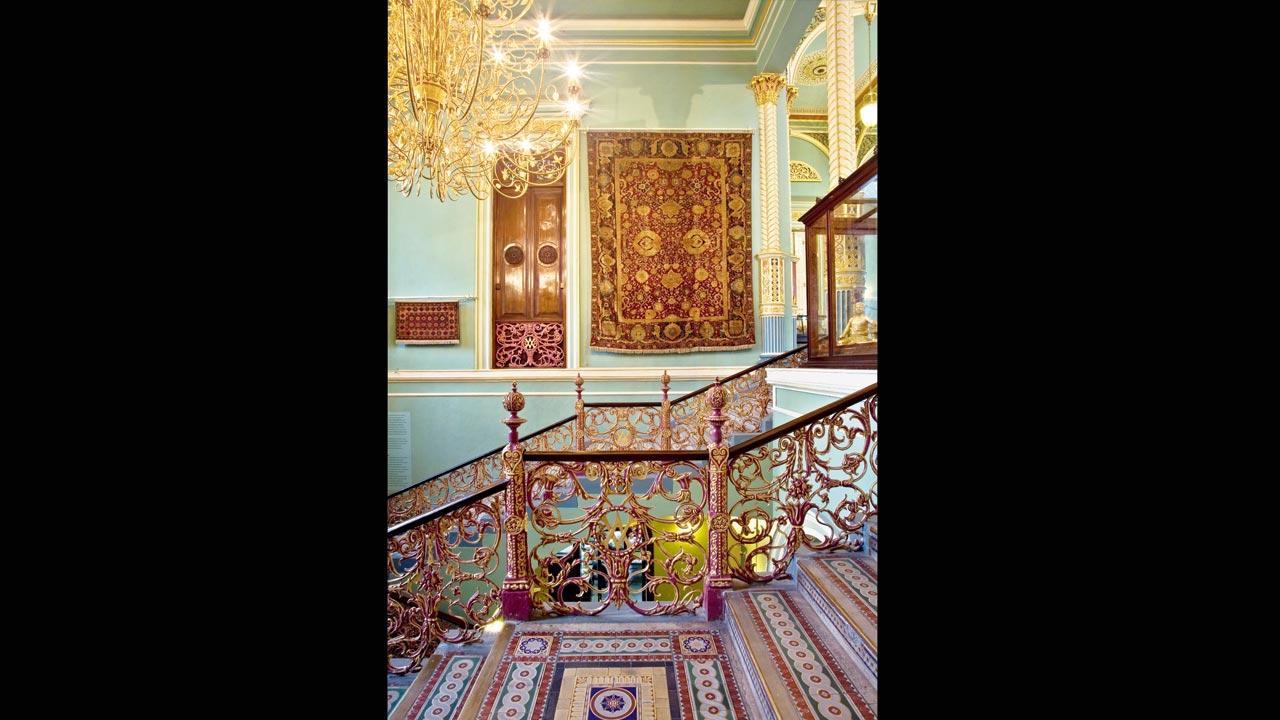
There was a growing demand for Indian carpets in European markets by the mid-19th century, which were prominently displayed at the international exhibitions. The Museum’s carpet was made by the inmates of Yerawada Jail in Poona. It is a copy of a 17th century Persian-style carpet, from the Archaeological Museum in Bijapur, which originally belonged to Asar Mahal, a religious shrine in the city. There was no pre-existing pile carpet weaving industry in western India prior to its introduction by the British, the local industry consisting of rugs and flat, coarse-weave durries. However, the growing demand sparked the start of pile carpet making centres in western India. A new design sensibility emerged at these centres, that combined traditional Indian motifs and foreign designs. The major centres of carpet weaving in western India, and in the Bombay Presidency, in particular, were from the prisons. Carpet workshops had been initiated by the colonial government in jails across India including Jaipur, Amritsar, Bikaner, Lahore and Agra. By the 1880s, from a total of 27 jails in the Bombay Presidency, 19 contributed to the carpet-making industry. The prisons in Poona, Thana, Karachi, Ahmedabad and Hyderabad recorded the most employment. The Thana Jail was equipped with 40 to 50 looms that produced beautiful Persian and cotton carpets. Considered a leader in carpet manufacture, the Yerawada Jail produced some of the best historical design carpets, sharing its templates with other jails to copy. In addition to the recreating historical patterns, Yerawada Jail used only natural dyes, which produced more muted colours that appealed to the Western clientele.
SCHLAGINTWEIT CASTS

German explorers and brothers Hermann, Robert and Adolph Schlagintweit were hired from 1854 to 1857 by the East India Company to conduct âmagnetic surveys’ in India and High Asia (Himalayas, Tibet, Nepal). In Bombay, English geologist, newspaper editor and the first curator of the Government Central Museum, Dr George Buist taught the brothers the technique of plaster casting which they used for ethnographic documentation during their travels. But while it was common German practice to take casts of well-known personalities, due to superstitions associated with funerary practices in India, creating casts of dead persons proved a challenge. Instead, they made bronze or copper casts of living people which were then mounted on wooden panels. Since the process of making the initial plaster casts took 30-45 minutes, moistened paper cones were inserted into the nostrils of the men, women, and even children whose casts were taken. The plaster also caused skin irritations and people were most reluctant to undergo the process and had to be forcibly induced to do so. The Museum’s collection has two wooden panels, each with seven masks of men from tribes across Sikkim, Kashmir, Kulu, Bengal, Tibet, Bhutan and even Ceylon. Some faces are contorted into an expression of discomfort with lines visible at the corners of the eyes and forehead.
THE ICE HOUSE
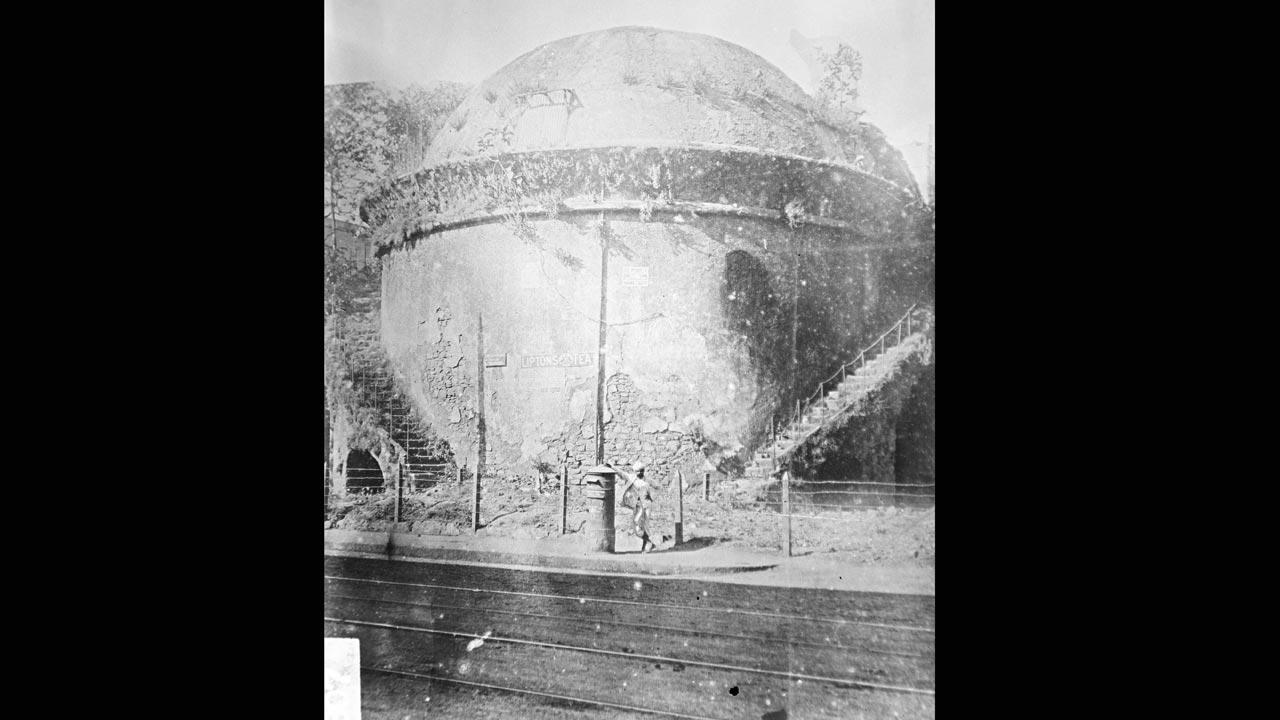
The Ice House of Bombay was built in 1843 in the Fort area, and stood next to the Great Western Hotel, opposite the entrance to the Government Dockyard. Its history reveals the story of the consumption of ice in India, the first ice cream ever eaten in the country in the 19th century made with ice from Massachusetts. The erstwhile Byculla Club pioneered the steady import of ice to Bombay and the construction of the Ice House and club members enjoyed speciality refreshments and cocktails served with crushed ice on sweltering days. In 1839, the construction of an ice house was proposed and a movement for the regular supply of ice from America was initiated. A fund of R10,000 was collected for building the Ice House, and an arrangement was made with Frederic Tudor of Boston who was called âThe Ice King’ in the 19th century, and who realised the profit to be made from harvesting, cutting and shipping ice from the lakes in America to tropical regions, where ice was a luxury product. Eventually, the introduction of ice-manufacturing machines, and other factors, such as the increasing expense of shipbuilding, adversely affected the ice trade. The Ice House was demolished in the 1920s. The KR Cama Oriental Institute at Lion’s Gate, established in 1916, now stands on the same site.
BOMBAY BLACKWOOD SCREEN
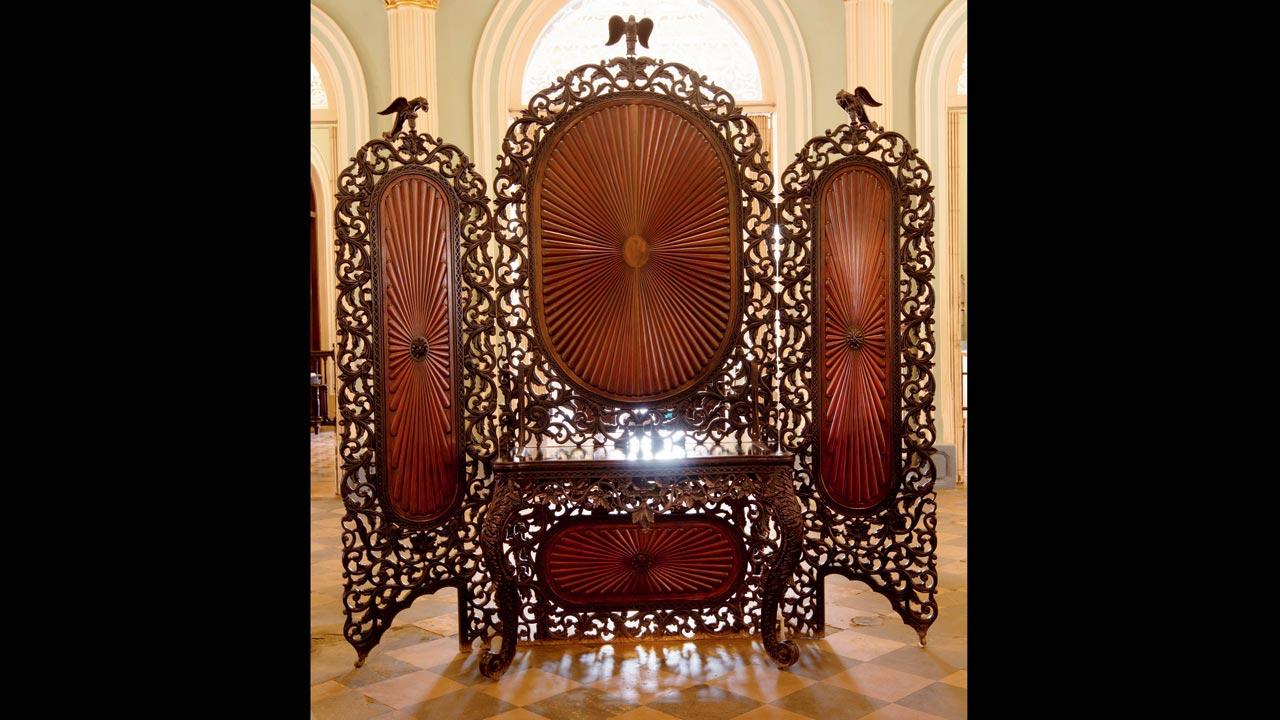
With the increase in the number of East India Company officials and European visitors in Bombay, a style of furniture known as Bombay Blackwood became fashionable where intricate Indian carving was matched with elaborate European styles which were produced in the dark luscious blackwood. The Parsi community dominated the Bombay Blackwood trade. Most of the craftsmen and furniture store owners were Parsis and the workshops producing the furniture were located in and around the fashionable Meadow Street. The Parsis also patronised the furniture along with the Pathare Prabhus and Bohras, as they were among the most affluent and lived in large spacious homes. The Museum’s elaborately carved Bombay Blackwood screen has an intricate foliate design running along the borders with three eagles perched on the top. It cost a princely sum of R500, and was presented to the Museum by Mungaldas Nathubhoy in 1859.
THE BOMBAY PLAGUE
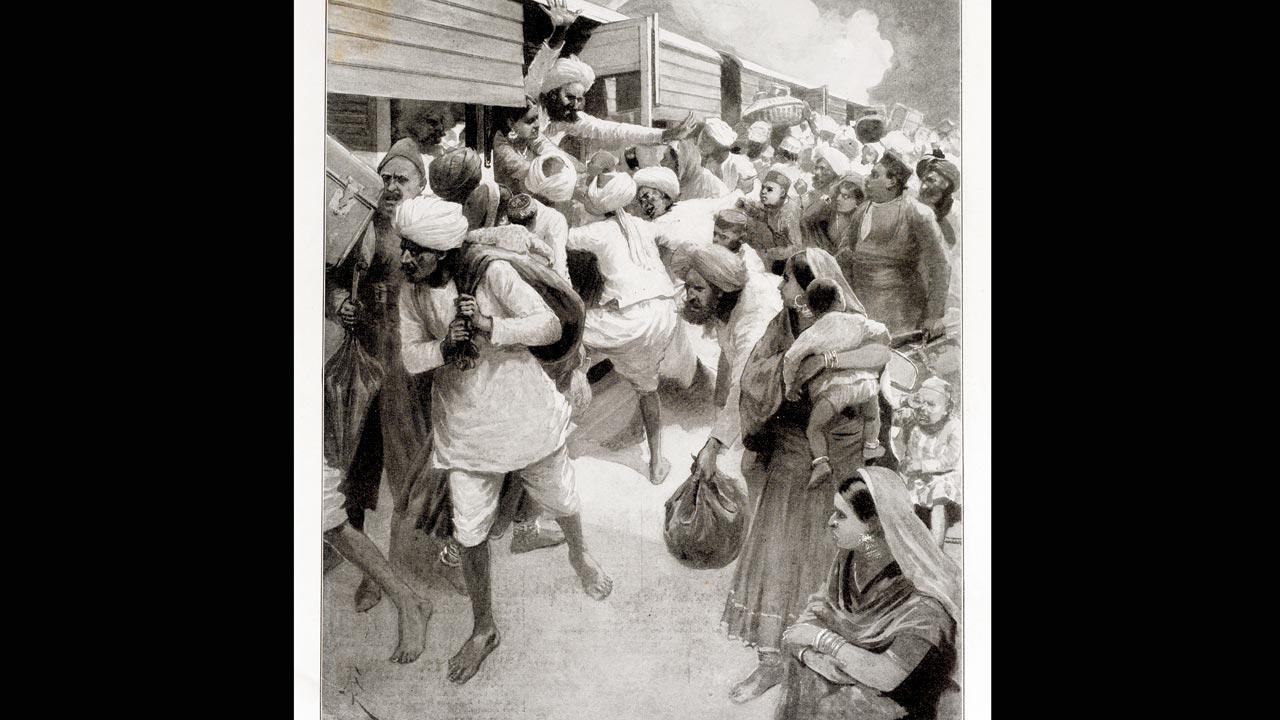
The Museum’s collection of images about the infamous Bombay plague highlights the unfortunate aspects of urban life in the late 19th century, the city attracting migrants resulting in overcrowding and unhygienic conditions. The bubonic plague outbreak originated in China in 1894 and spread through the world via the ports used by British steamships across the Empire. By the beginning of December 1896, the epidemic had rapidly spread through then Bombay, with the suburbs of Parel, Sion, Mahim, Worli and Byculla being the most affected. Waldemar Haffkine, a Russian bacteriologist, developed the vaccine for the plague in his laboratory in 1897-98 after which inoculations finally began. On November 9, 1898, the Bombay City Improvement Trust was created by an act of the British Parliament. It implemented 33 vital schemes to improve the city’s housing and planning infrastructure which included the building of chawls or working-class housing, and roads like Princess Street and Sydenham Road in today’s South Mumbai, which would channel the sea air into the more crowded parts of the town.
Source: https://www.mid-day.com/amp/sunday-mid-day/article/101-ways-of-seeing-bombay-23225224


